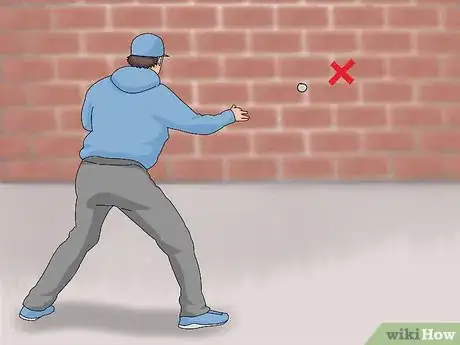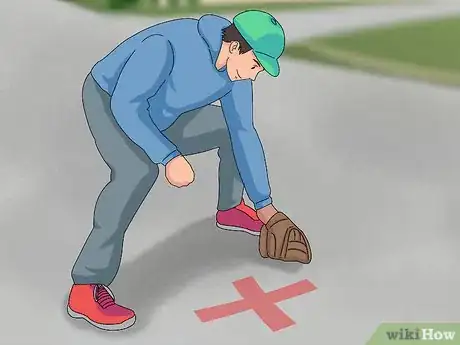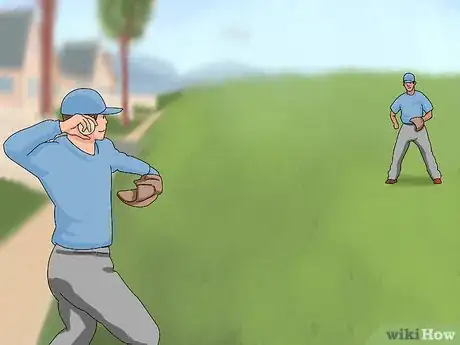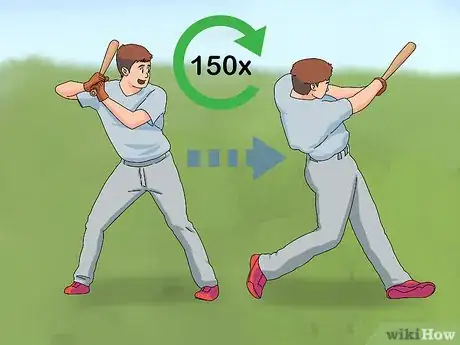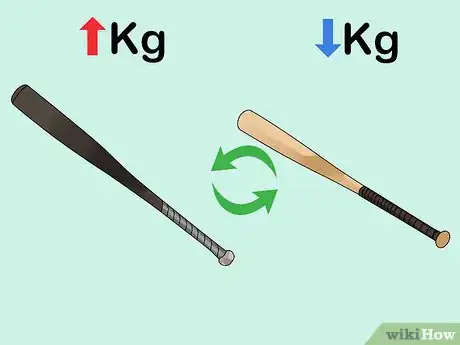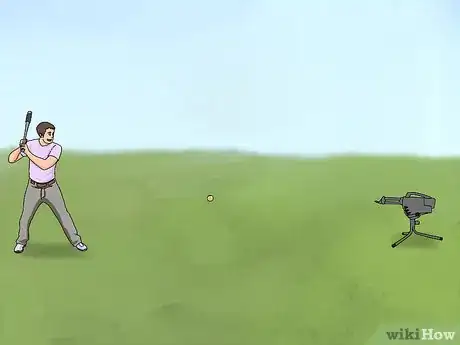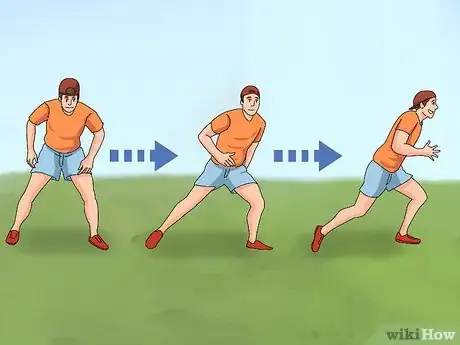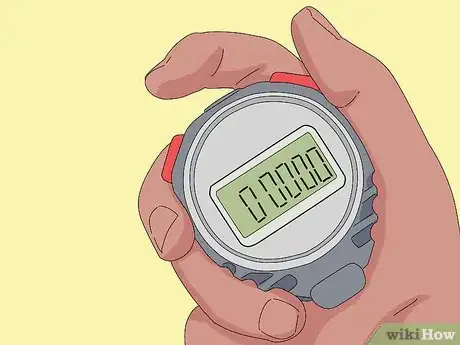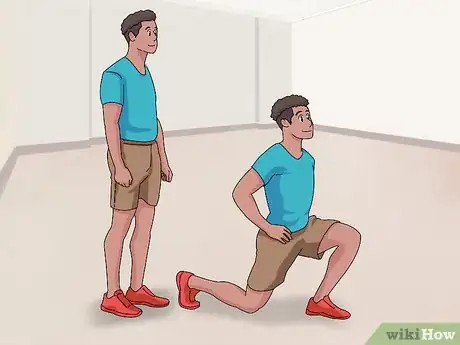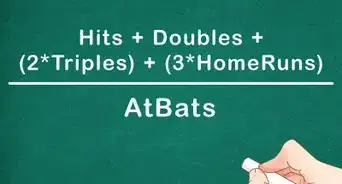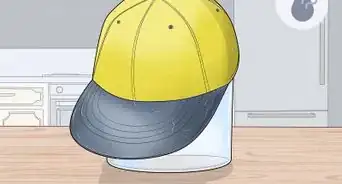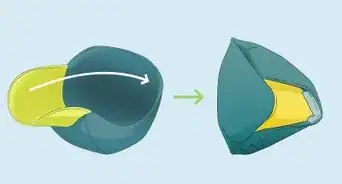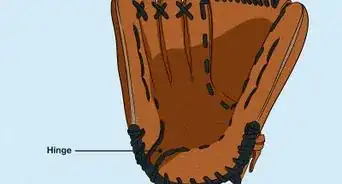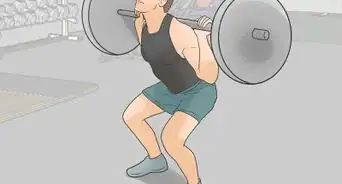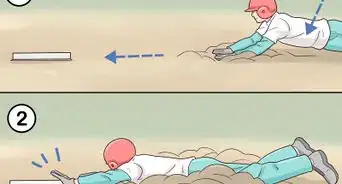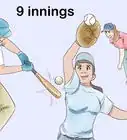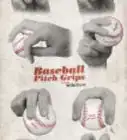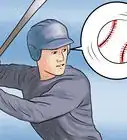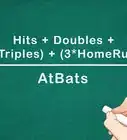This article was co-authored by Isaac Hess. Isaac Hess is a Baseball Coach, Instructor, and the Founder of MADE Baseball Development and Champion Mindset Training Program, a baseball training program based in Los Angeles, California. Isaac has over 14 years of experience coaching baseball and specializes in private lessons and tournaments. He has played baseball for both professional and collegiate leagues including Washington State University and the University of Arizona. Isaac was ranked as one of Baseball America's top 10 prospects for 2007 and 2008. He earned a BS in Regional Development from the University of Arizona in 2007.
There are 10 references cited in this article, which can be found at the bottom of the page.
This article has been viewed 14,356 times.
Drilling techniques outside of practice or a game is critical if you want to improve your skills in baseball. To become a well-rounded player, you'll want to practice your catching, throwing, hitting, and running. If performed correctly, specific drills can hone your skills so that you're in the best shape when it's time to play the game.
Steps
Honing Your Catching and Throwing Skills
-
1Throw a ball against a wall to improve ball handling. Find a non-breakable wall, like a concrete or brick wall for this exercise. Get in the ready position, with your feet spread shoulder-width apart and your knees slightly bent. Throw balls against the wall so they bounce back towards you. Practice catching the ball as it comes back.[1]
- Throw the ball at different areas on the wall so you can practice catching the ball at different levels.
- Alternate between catching the ball traditionally and backhanded to become better at catching in different scenarios.
- To practice grounders, throw the ball closer to the bottom of the wall so that it rolls back towards you on the ground rather than bouncing in the air.
- Practice throwing the ball against the wall for 30 minutes to an hour at a time.
-
2Throw the ball at an X on the wall to practice throwing accuracy. Use a piece of tape or chalk to write the X on the wall. Then, throw the ball and aim for the X. Move forward, back, left, and right in the ready stance and try hitting the X from different angles.[2]
- This is a great drill if you are struggling with your throwing accuracy.
- You can also throw the ball into a net rather than a wall if you are practicing pitching.[3]
Advertisement -
3Set up an imaginary base to practice tag plays while playing wall ball. Draw an X on the ground or use a base to practice tagging people out after catching the ball. Set up the base next to where you’ll be throwing. Catch the ball and practice quickly tagging the base with one of your feet.[4]
- You can also practice catching the ball while keeping one foot on the X. This replicates tagging people out during a force play.
-
4Toss the ball into the air and catch it to practice catching a pop fly. Underhand throw the ball directly over you and catch it with your mitt. This will replicate catching pop flys or balls that get hit high in the air.[5]
- This exercise will help with hand-eye coordination.
- Do this exercise 100 times per day to develop your muscle memory.
-
5Play catch with a friend or teammate. Have your friend throw a variety of different throws including grounders to help round out your game. Throw the ball at different angles and at different heights so that you can practice different catching scenarios. Have your partner do the same when they throw the ball back to you.[6]
Refining Your Hitting
-
1Swing the bat at least 150 times a day. Get in the proper batting stance, with your knees slightly bent and beneath your shoulders. Practice “empty” swinging by just swinging the bat as you would in a game. This will instill muscle memory and strengthen your arms which will improve technique and power.[7]
- You don’t have to swing the bat 150 times in a row. Break up your empty bat swings into 10 repetitions per set.
-
2Alternate between differently weighted bats. Using a heavier bat than you’d normally use will improve your swinging power.[8] Do a set of empty swing repetitions with a bat that weighs heavier than the one you are using. Then, do 2 sets with a bat that weighs the same as you’d be using. Finally, do a single set of empty swings with a lighter bat to improve your speed and technique.[9]
- Practice swinging the bat you’d normally use more than an overweight or underweight bat so that you don’t lose your technique.
-
3Swing the bat on your knees to improve upper body technique. Get down on 1 or 2 knees and swing the bat while trying to maintain good technique. Doing this will concentrate your practice on your upper body movement, rather than movement in your hips and your legs. Do 10 repetitions at a time before moving onto another drill.[10]
- You can also have a friend throw a ball for you to hit while kneeling instead of doing empty swings.
-
4Hit machine-thrown balls. Start by setting the machine to a slow pitch speed and concentrate on making good contact on the ball. As your hand-eye coordination improves, turn the pitching speed on the machine higher and try to make contact. Once you can hit high-velocity balls, you can practice putting power behind your swings and hitting the ball in a specific direction.[11]
- You can find pitching machines at batting cages or wherever your team practices.
- Most batting cage practice should last at least 60 minutes.
- Take a 3-5 minute break every 20 minutes.
- You can even find machines that throw alternate pitches, such as curveballs, so you can get more variety in your practice.[12]
Improving Your Speed
-
1Do sprints to improve your base running speed. Sprinting develops your explosive speed and will help you run bases better.[13] Set up markers 20 yd (60 ft), 40 yd (120 ft), and 60 yd (180 ft) away. Do 2 full sprints at each distance and add a walking lap in between each set so you can properly rest.[14]
- Since you aren’t constantly running in baseball, it’s best to replicate the conditions of the game and concentrate on explosive quickness rather than long-distance endurance.
-
2Practice sidestepping and then sprinting to practice outfielding. While basic sprints will help you will base running, side-stepping into a sprint will help you field balls that are far from you. Sidestep back and forth before going for the sprint. Then, when you reach the end of the sprint, sidestep back and forth again before running back.[15]
-
3Use a stopwatch to monitor your speed. Determine the distances that you need to improve and monitor your progress with the help of a stopwatch. Set goals for yourself to reduce your time as you continue practicing. This will give you an idea of what you are doing right and wrong.[16]
- In addition, seeing your progress will motivate you to continue practicing.
- For professional baseball, scouts typically expect a player to be able to run from home to first base in 4-4.3 seconds.
- Professional baseball players can run the 60 yd (180 ft) dash in 6.8-7 seconds.
-
4Perform lunges to increase flexibility and stability. Lunges improve range of motion in your legs and are one of the most popular exercises in baseball. Step forward with one leg while lowering your hips and bringing your other knee to the ground. Alternate legs and continue repeating the steps to perform lunges. Do 10 repetitions on each leg.[17]
References
- ↑ https://youtu.be/c8xLMckpdPw?t=1m
- ↑ https://baseballeagle.com/best-ways-to-practice-baseball-alone/
- ↑ https://www.batsfinder.com/practice-baseball-alone/
- ↑ https://baseballeagle.com/best-ways-to-practice-baseball-alone/
- ↑ https://www.batsfinder.com/practice-baseball-alone/
- ↑ https://youtu.be/JTuopUgmg1w?t=1m5s
- ↑ https://www.batsfinder.com/practice-baseball-alone/
- ↑ Isaac Hess. Baseball Coach & Instructor. Expert Interview. 20 March 2020.
- ↑ https://youtu.be/pAHDbrJh-zQ?t=2m24s
- ↑ https://www.flipgive.com/stories/three-baseball-hitting-drills-to-practice-from-home
- ↑ https://www.batsfinder.com/practice-baseball-alone/
- ↑ Isaac Hess. Baseball Coach & Instructor. Expert Interview. 20 March 2020.
- ↑ Isaac Hess. Baseball Coach & Instructor. Expert Interview. 20 March 2020.
- ↑ http://www.stack.com/a/baseball-conditioning
- ↑ https://youtu.be/nozNqYmBlwI?t=1m39s
- ↑ https://baseballeagle.com/best-ways-to-practice-baseball-alone/
- ↑ http://www.stack.com/a/top-baseball-exercises

